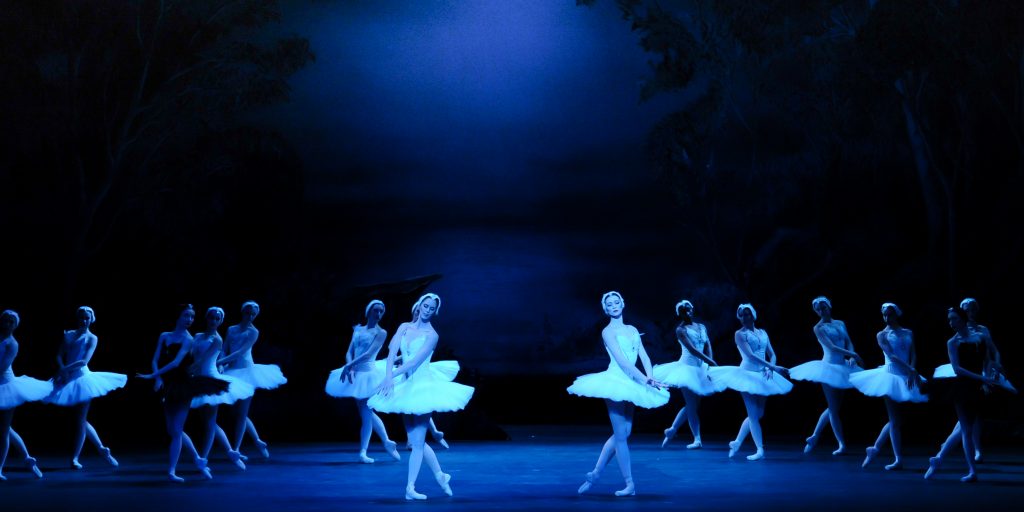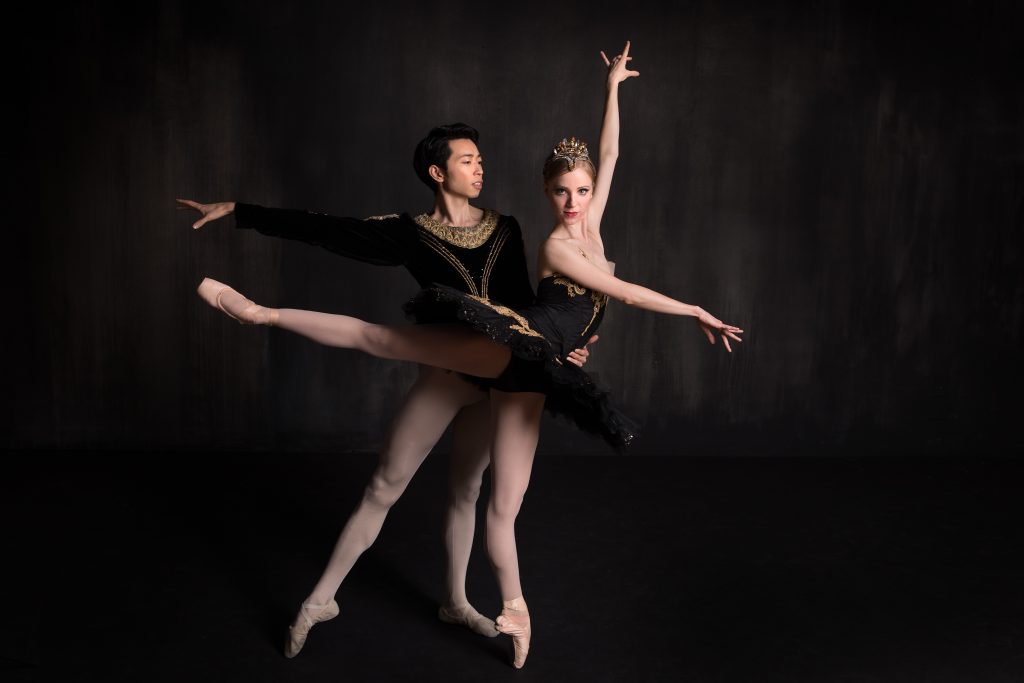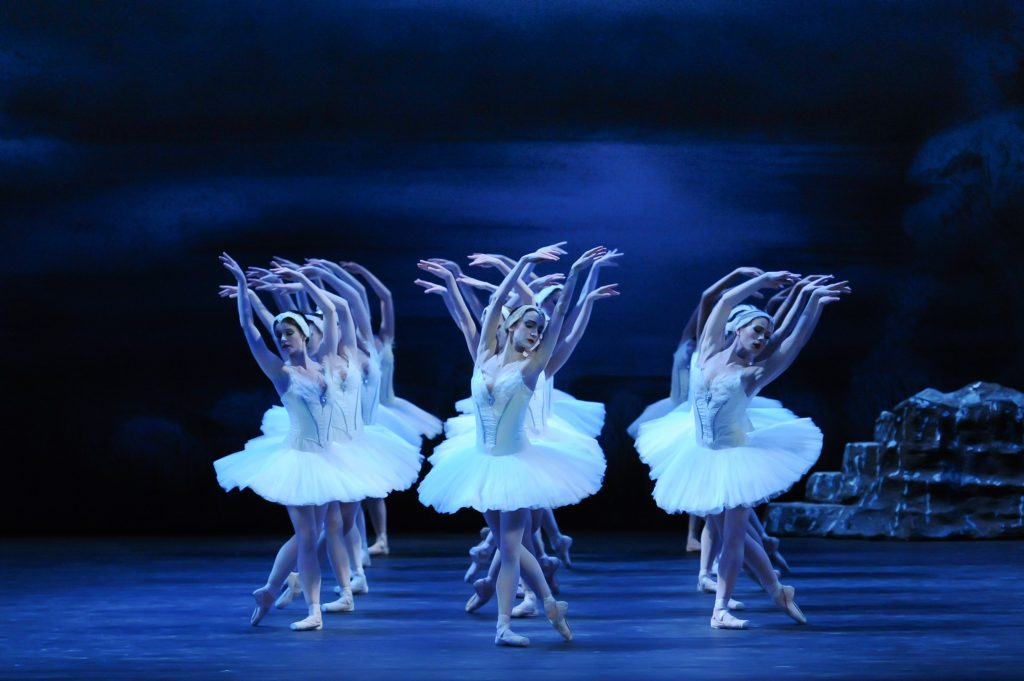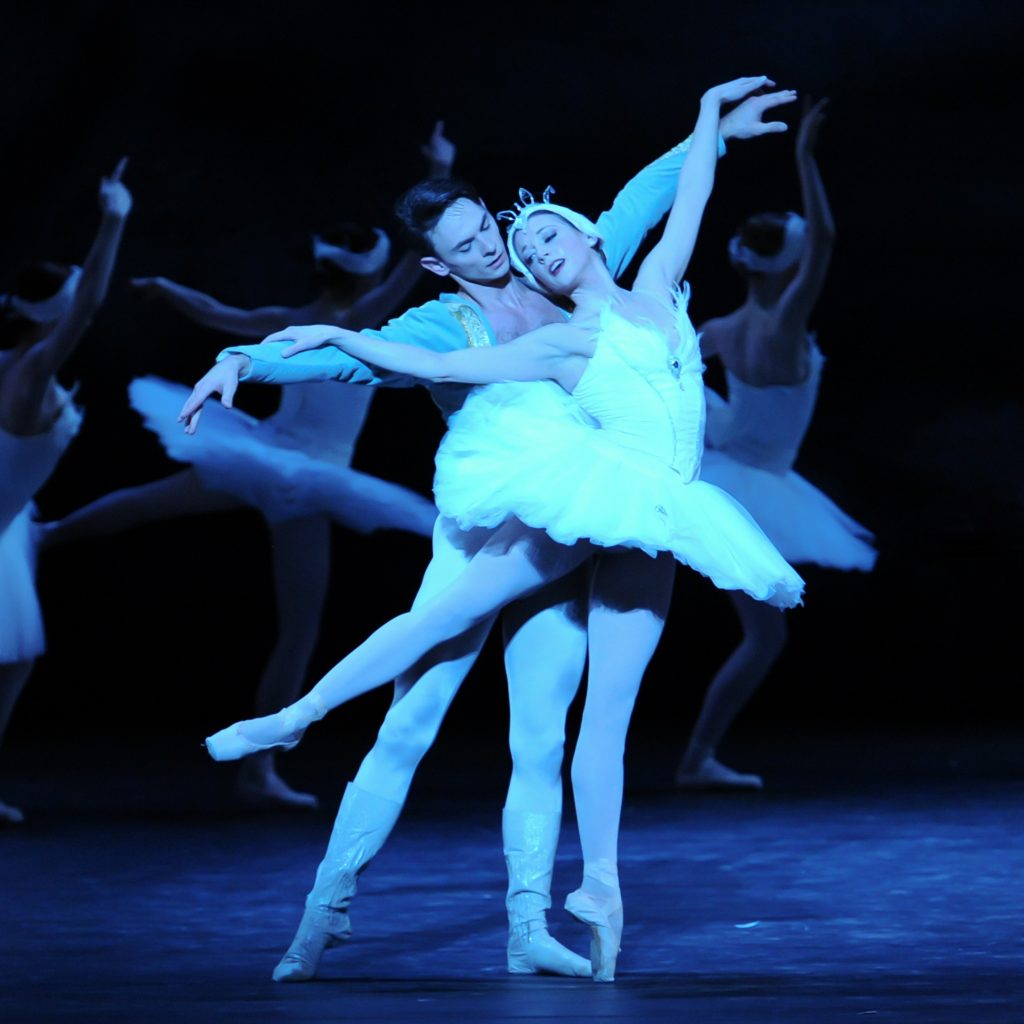‘Swan Lake’ Soars at Pittsburgh Ballet Theatre
- Like
- Digg
- Del
- Tumblr
- VKontakte
- Buffer
- Love This
- Odnoklassniki
- Meneame
- Blogger
- Amazon
- Yahoo Mail
- Gmail
- AOL
- Newsvine
- HackerNews
- Evernote
- MySpace
- Mail.ru
- Viadeo
- Line
- Comments
- Yummly
- SMS
- Viber
- Telegram
- Subscribe
- Skype
- Facebook Messenger
- Kakao
- LiveJournal
- Yammer
- Edgar
- Fintel
- Mix
- Instapaper
- Copy Link

White and black swans dancing together in ‘Swan Lake.’
Swan Lake is not just a story of romance and good versus evil; it is also a story of continued product improvement. Tchaikovsky debuted the production in 1877 with the Bolshoi Ballet and choreography by Julius Wenzel Reisinger. The exact sources of his inspiration are unknown, but he (and the unknown author of the original libretto) may have been influenced by Russian and German mythological tales of people turning into swans. In 1871 Tchaikovsky wrote, directed, and choreographed a little ballet called The Lake of the Swans for his nieces and nephews while spending the summer with them and his sister. Some of the music from that summer production remains in Swan Lake to this day.
Tchaikovsky’s ballet did moderately well, but was no blockbuster and fell out of popular repertoire several years after. Audiences, critics, and dancers thought the music was too complex and orchestral and that the choreography was lacking. There were several other stagings of Swan Lake by others between 1879 – 1894 with both existing and new choreography.
Master choreographers Marius Petipa and Lev Ivanov were in talks with Tchaikovsky about reviving the show with new elements before the composer’s death in 1893. Petipa and Ivanov, with assistance from some of Tchaikovsky’s associates and others, premiered the revamped and expanded ballet in 1895 at the Mariinsky Ballet in Saint Petersburg. It was a big success and has been staged by ballet companies around the globe.
Pittsburgh Ballet Theatre, under the artistic direction of Terrence Orr, has also improved the production of Swan Lake here in Pittsburgh by adding new sets for this 2018 production. Orr said in a pre-show talk that the new designs capture incredible depth and light, and add an entirely new dimension to the production. Costumes and the new set were done by the noted Peter Farmer who died in January of 2017. Farmer hand-painted all his renderings and had worked with PBT on its prior production of Giselle. He had also done work for many other companies including England’s Royal Ballet, American Ballet Theatre, and the Mariinsky.
Swan Lake Storyline
In Swan Lake a prince, Siegfried, is being pressured by his mother the queen to find a wife. One day he is out hunting with his crossbow near dusk and sees a white swan turn into a beautiful woman,Odette. The evil sorcerer von Rothbart had cast a spell on this lovely maiden from a respectable family, turning her into a swan. Each night she returns to human form and only true love can break the spell. If the love proves false she will die. She will also die if the sorcerer is killed before the spell is broken.
At a party at the palace six princesses are presented to Prince Siegfried as possible brides. One especially catches his eye. It is the enchanting woman he met while hunting at night—or is it? She is actually the sorcerer’s daughter, the black swan Odile, whom von Rothbart has transformed into the likeness of Odette. The Prince chooses to marry Odile, until he finds out that he has been deceived. He then furiously tries to find a way to have his true love, Odette.
Opening Night Performance
I attended the opening night performance at the Benedum and it was a wonderful ballet experience. Swan Lake is a long and technically difficult ballet, with many different classical techniques used. Over two weeks and eight performances the dual role of Odette/Odile is played by principal dancers Amanda Cochrane, Hannah Carter, Alexandra Kochis, and Julia Erickson. Prince Siegfried is danced by principals Yoshiaki Nakano, Alejandro Diaz, Luca Sbrizzi, and soloist Alexandre Silva.

Yoshiaki Nakano (Prince Siegfried) and Amanda Cochrane (pictured here as Odile).
On opening night the pair was Cochrane and Nakano. And what a pair they made. Dancing together, solo, or with others, they were a sight to behold. Through leaps, lifts, and romantic dances their movements were fluid and exciting.
Cochrane, costumed in a white tutu with crystalline sequins occasionally sparking from her outfit and headdress, gave a brilliant performance as Odette. Her en pointe staccato step dancing and port de bras (arm movements) mimicking a swan’s wing movements were enthralling to watch.
She also excelled in the Arabesque movements, even hopping backwards during a dance piece on the supporting leg. And as Odile in Act III at the palace, it was thrilling to see her dance the Black Swan pas de deux with Nakano, performing the famous 32 fouetté turns brilliantly.
Nakano turned in a smooth and athletic performance as Prince Siegfried both in his leaping dance runs and in more intimate dances with Cochrane as both Odette and Odile. For dances early in the ballet he was clad in white tights with a robin egg blue top.
A striking visual scene occurs when Siegfried is dancing with Odile. Appearing through a window at the back of the palace set is a vision of Odette dancing with furious anxiety at the sight of the two of them together.

‘Dance of the Swans.’
Everyone in the cast did a fine job. The corps de ballet excelled in all their dances especially the “Dances of the Swans” and “Dances of the Little Swans.” The precision and timing of the company in all dance scenes was very smooth, with dancers joining and leaving various groups.
Other notable dancers were Alejandro Diaz as the mean and green von Rothbart and Masahiro Haneji as the jester. In the jester role, he provided fun and levity to the ballet. In the first act he intercepted kisses intended for others and did some dance moves that any modern-day breakdancer would have given him props for.
Acts II and IV contained the wonderful swan dance scenes. Also visually interesting was Act III with the ball at the palace. There was a variety of richly colored and tailored costumes representing entourages from various countries. With several different ethnic traditions represented in their dances—Spanish, Neapolitan, Hungarian, and Polish—it was somewhat reminiscent of the Pittsburgh Folk Festival. Some groups had various accouterments including fans, tambourines, and white feather hand pieces.
The audience seemed to enjoy all aspects of Pittsburgh Ballet Theatre’s performance of Swan Lake, rewarding the dancers with strong applause after every dance scene and a long round of sustained applause at the show’s conclusion. It was a performance I enjoyed very much as well.

Alexandra Kochis as Odette and Luca Sbrizzi as Prince Siegfried.
Big Orchestra in the Pit
In Swan Lake there are no spoken words so the emphasis is on the dancing and the music. The orchestra pit at the Benedum was opened up to the widest aperture that I had seen. And it’s no wonder, with the 50-member Pittsburgh Ballet Theatre Orchestra performing the score. Music Director and Principal Conductor Charles Barker had the talented group sounding sharp and precise. The dancing and music was synchronized wonderfully and the orchestra received several enthusiastic rounds of applause. There was another rhythmic musical sound to be heard and it didn’t come from the orchestra. It was created by the soft tapping of the ballet shoes on the dance surface throughout the night.
Closing Credits and Ticket Information
As mentioned previously Farmer’s new sets and backdrops provide extra dimension and context to the scenes. The costumes by Farmer are also exquisite. Other top billed contributors include: Michael Hagen, scenic artist; Christina Giannelli, lighting design; and Alicia Reece, stage manager. The production is staged and directed by Terrence Orr. Pittsburgh Ballet Theatre’s Swan Lake continues at the Benedum through February 25. For tickets and more information call (412) 456-6666 or visit PBT’s website.
Photos courtesy of Rich Sofranko and Pittsburgh Ballet Theatre. Amanda Cochrane and Yoshiaki Nakano photo by Duane Reider.
Rick Handler is the executive producer of Entertainment Central.
Share on Social Media
- Like
- Digg
- Del
- Tumblr
- VKontakte
- Buffer
- Love This
- Odnoklassniki
- Meneame
- Blogger
- Amazon
- Yahoo Mail
- Gmail
- AOL
- Newsvine
- HackerNews
- Evernote
- MySpace
- Mail.ru
- Viadeo
- Line
- Comments
- Yummly
- SMS
- Viber
- Telegram
- Subscribe
- Skype
- Facebook Messenger
- Kakao
- LiveJournal
- Yammer
- Edgar
- Fintel
- Mix
- Instapaper
- Copy Link
Follow Entertainment Central
Sign up for the EC Newsletter
Latest Stories







